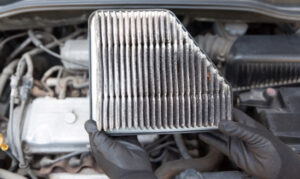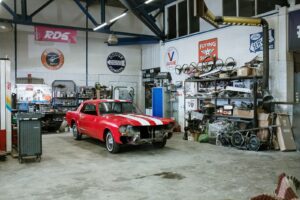Acrylic paint is a popular choice among car enthusiasts and professionals for its durability and versatility. It is a type of water-based paint that is made from acrylic polymer emulsion, which is a mixture of acrylic resin and water. This type of paint is known for its ability to dry quickly, resist fading and weathering, and hold a high gloss finish.
Purpose of Acrylic Paint
Acrylic paint is used to give cars a new coat of paint or to change the color of the car. It is also used to repair and touch up areas of the car that have been damaged by scratches or rust. The paint can also be used to create custom designs or artwork on the car’s surface. Acrylic paint is used not only on cars but also in many other industries like aerospace, woodwork, crafts and more.
Why is it important?
Acrylic paint is important for car owners and professionals because it provides a durable and long-lasting finish. The paint is resistant to fading and weathering, which means that the color of the car will remain vibrant and the finish will remain smooth and shiny for years to come. Additionally, the paint is easy to clean and maintain, which helps to keep the car looking great over time.
Benefits of Acrylic Paint
- Acrylic paint dries quickly, which means that the car can be driven and used soon after it has been painted.
- Acrylic paint is resistant to fading and weathering, which helps to maintain the car’s color and finish over time.
- Acrylic paint is easy to clean and maintain, which helps to keep the car looking great over time.
- Acrylic paint can be used to create custom designs and artwork on the car’s surface, allowing for a personal touch.
- Acrylic paint is relatively inexpensive and widely available, making it a cost-effective choice for car painting.
How to use Acrylic Paint
- The first step in using acrylic paint to paint a car is to clean and prepare the car’s surface. This includes removing any dirt, dust, or rust from the surface of the car.
- Next, apply a coat of primer to the car’s surface. This will help to ensure that the paint adheres properly to the car’s surface and will help to create a smooth and even finish.
- Once the primer has dried, apply the acrylic paint to the car’s surface using a paint roller or brush. It is important to apply the paint in thin, even coats to avoid drips or runs.
- Allow the paint to dry completely before applying any additional coats. Depending on the weather and humidity, it may take several hours for the paint to dry completely.
- Once the final coat of paint has dried, a clear coat can be applied to protect the paint and give it a glossy finish.
- Final step is to let it dry completely, before driving it.
Precautions
- Always wear gloves and protective gear when working with acrylic paint to avoid contact with skin.
- Work in a well-ventilated area to avoid inhaling any fumes from the paint.
- Avoid touching the paint with your hands or any other contaminants to ensure a clean, even finish.
- Keep the paint away from any open flames, sparks or heat sources, as it can be flammable and harmful when inhaled.
Why was this invented?
Acrylic paint was invented in the 1940s by scientists at the Rohm and Haas Company in Philadelphia, as an alternative to oil-based paints which had longer drying times and released harmful fumes. Acrylic paint quickly become popular due to its quick drying times, ability to resist fading and weathering, and its ease of use.
Other Types of Paints
- Enamel paint: This type of paint is known for its durability and resistance to chemicals, heat, and weathering. It is often used for painting cars, appliances, and other industrial or commercial items.
- Lacquer paint: This type of paint is known for its high gloss finish and fast drying times. It is often used for painting cars, furniture, and other decorative items.
- Urethane paint: This type of paint is known for its durability, chemical resistance, and long-lasting finish. It is often used for painting cars, trucks, and other industrial or commercial items.
- Polyurethane paint: This type of paint is known for its durability, chemical resistance, and long-lasting finish. It is often used for painting cars, trucks, and other industrial or commercial items.
In conclusion
Acrylic paint is a durable and versatile choice for painting cars. It offers many benefits such as quick drying times, resistance to fading and weathering, and the ability to create custom designs. It is important to use it safely, by wearing protective gear and working in a well-ventilated area. And there are other types of paints available as well, but it depends on the specific application and required end results.










